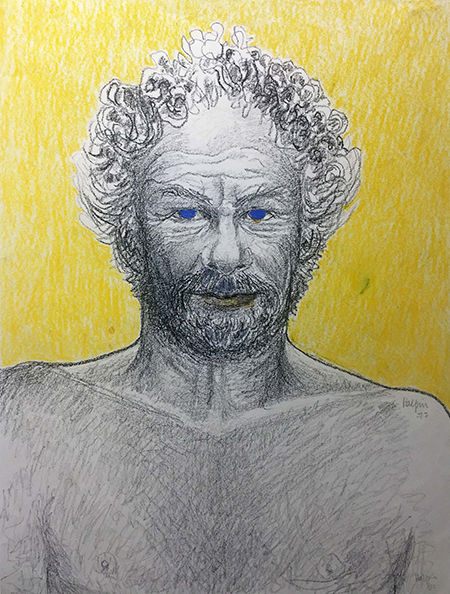
With Lawrence Halprin, "Alternative Scores - Drawing from Life," we get to see some of his unexpected artwork and sketches, rarely seen before in public. Halprin was one of America’s leading urban designers and landscape architects in the post-World War II period. Educated at the Harvard Graduate School of Design under the likes of Laszlo Moholy-Nagy, Walter Gropius and Marcel Breuer, he eventually settled in the Bay Area during the 1940s and made his career there. He became famous for the environmentally sensitive master plan of Sea Ranch, a residential community along the Sonoma County coast, in the 1960s, and he was responsible for some of the redesign of downtown L.A. in the 1990s.
There’s a range of personal work here, some of which are autobiographical. A loosely-rendered watercolor depicts two men playing pool under a yellow light in an untitled work from 1944. This was the year he served in the U.S. Navy, so these men with their short buzz-cut hair and baggy pants were probably sailors. One of the most delightful of the early works is a Miro-like, pen-and-ink abstraction “Sunday Afternoon” (1953), full of dancing lines and squiggles. Halprin’s wife was the famous postmodern dancer/choreographer Anna Halprin, so there are drawings and paintings of dance settings and bodies in motion. “Portrait of Annie” (1948) shows a a series of overlapping line drawings of her posing nude. Later they built a deck overlooking a pine forest for dance, as shown in the pen and ink drawing, “Dance Deck, Kentfield” (1985). A “Self-Portrait" (1977) presents Halprin with unruly hair and beard. While the drawing is mostly monochromatic, he colored in his eyes with a marine blue, and the backdrop is yellow. The artist is shirtless, showing off his broad chest, and a faint curl of a smile sits on his lips as he looks directly out of the frame of the paper.
Several renderings of his beloved California coastline are included. In “Sea Ranch” (1980), the rocks rise from the sand and sea like prisms of color, and waves are suggested by a few lines. Another “Sea Ranch” (2006) uses ink, crayon, and watercolor to portray several gnarled and desiccated trees standing on the shoreline, like sentinels watching the sea toss against rocks in the distance.
